
Baudouin, Dutch name Boudewijn, was King of the Belgians from 17 July 1951 until his death in 1993. He was the last Belgian king to be sovereign of the Congo.

Belgium is a constitutional, hereditary and popular monarchy. The monarch is titled King of the Belgians and serves as the country's head of state and commander-in-chief of the Belgian Armed Forces. There have been seven Belgian monarchs since independence in 1830.

Astrid of Sweden was a member of the Swedish House of Bernadotte and later became Queen of the Belgians as the first wife of King Leopold III. After her marriage to Leopold in November 1926, she assumed the title of Duchess of Brabant. Astrid held the position of Queen of the Belgians from 23 February 1934 until her untimely death. Known for her charitable efforts, she focused particularly on causes related to women and children.
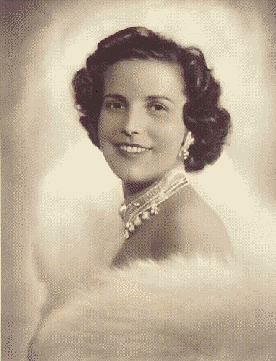
Princess Lilian of Belgium, Princess of Réthy was the second wife of King Leopold III of Belgium. Born in the United Kingdom and raised in Belgium, she became a volunteer as a car driver that transported wounded Belgian and French to the hospital in Bruges during World War II. Lilian married King Leopold III in 1941 and became consort of the Belgian monarch. The couple produced three children. She was also a stepmother to Leopold III's children from Queen Astrid and became the "first lady" of Belgium during the first nine years of her stepson King Baudouin's reign. Her charity work revolved around medicine and cardiology.

Fabiola Fernanda María-de-las-Victorias Antonia Adelaida de Mora y Aragón was Queen of the Belgians from her marriage to King Baudouin in 1960 until his death in 1993. The couple had no children, so the Crown passed to her husband's younger brother, King Albert II.
A dowager is a widow or widower who holds a title or property – a "dower" – derived from her or his deceased spouse. As an adjective, dowager usually appears in association with monarchical and aristocratic titles.
Events in the year 1968 in Ireland.
Queen Fabiola Mountains is a group of mountains in Antarctica, 50 kilometres long, consisting mainly of seven small massifs which trend north–south, forming a partial barrier to the flow of inland ice. The mountains stand in isolation about 140 km (90 mi) southwest of the head of Lutzow-Holm Bay. The mountains were discovered and photographed from aircraft by the Belgian Antarctic Expedition under Guido Derom on 8 October 1960. With permission from King Baudouin of Belgium, the mountains were named after his newly wedded wife Fabiola. In November–December 1960, the mountains were visited by a party of the Japanese Antarctic Research Expedition (JARE), 1957–1962, which made geomorphological and geological surveys. They applied the name Yamato Mountains. The highest massif is Mount Fukushima.

The European Medical Students' Association (EMSA) is a non-governmental and non-profit organisation for medical students; it offers opportunities to their members and provides a voice for medical students across Europe, representing their interests to other European institutions and organizations. EMSA was founded in Brussels in 1990. It integrates medical students in Europe through activities organized for and by medical students. EMSA's network and platform encourages medical students from various countries in geographical Europe to actively engage in matters related to health care, medical education, medical ethics, medical science, and general societal well-being, by acting as a conduit for increased interaction and sharing of knowledge between European medical students in these respective areas.

The King Baudouin Foundation (KBF) is a foundation based in Brussels (Belgium). It seeks to change society for the better and invests in inspiring projects and individuals.
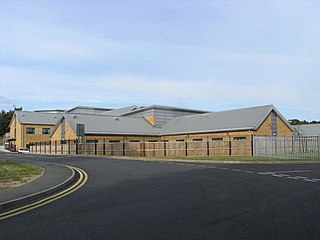
A mental health trust provides health and social care services for people with mental health disorders in England.
The Queen Mathilde Fund is a Belgian foundation named after Queen Mathilde of Belgium. The fund was created from the donations the queen received on her wedding with then-Prince Philippe and is aimed towards the most vulnerable people in Belgian society.
The Queen Elisabeth Medical Foundation (QEMF) is a Belgian non-profit organization, founded in 1926 by Elisabeth of Bavaria, wife of Albert I. She founded the organization, based on her experience with the wounded from the front-line during the First World War. The foundation wants to encourage laboratory research and contacts between researchers and clinical practitioners, with a particular focus on neurosciences. The QEMF supports seventeen university teams throughout Belgium.
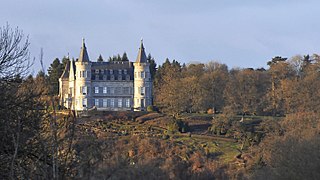
Ciergnon Castle or the Royal Castle of Ciergnon is a residence and summer retreat of the Belgian royal family situated near the town of Ciergnon in the municipality of Houyet, Namur Province, Wallonia. The castle is a property of the Belgian Royal Trust.

Belgian–Dutch relations refer to interstate relations between Belgium and the Netherlands. It can be seen as one of the closest international relationships in existence, marked by shared history, culture, institutions and language, extensive people-to-people links, aligned security interests, sporting tournaments and vibrant trade and investment cooperation. Both nations are members of the European Union and NATO and, together with Luxembourg, form the Low Countries and the Benelux economic union.

The Church of Our Lady of Laeken is a neo-Gothic Roman Catholic church in the Brussels district of Laeken, Belgium. It was originally built in memory of Queen Louise-Marie, wife of King Leopold I, to the design of the architect Joseph Poelaert.
Baron Gaston de Gerlache de Gomery was a Belgian polar explorer.
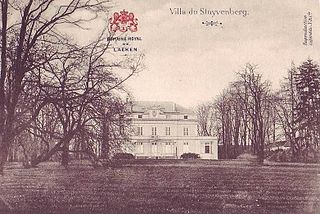
The Château of Stuyvenberg is a residence of the Belgian royal family, located in Laeken, Brussels. It is situated at an elevation of 56 metres (184 ft).
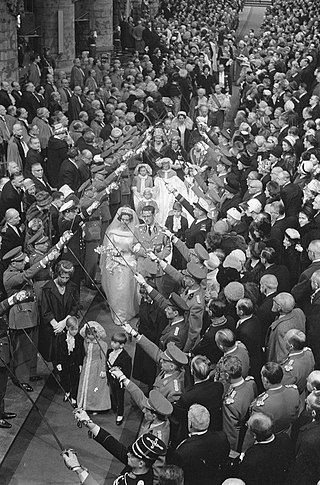
The wedding of King Baudouin of Belgium, and Doña Fabiola de Mora y Aragón took place on Thursday, 15 December 1960. The couple was married first in a civil ceremony held in the Throne Room of the Royal Palace of Brussels and then in a Roman Catholic ceremony at the Cathedral of St. Michael and St. Gudula.
Events in the year 1960 in Belgium.












